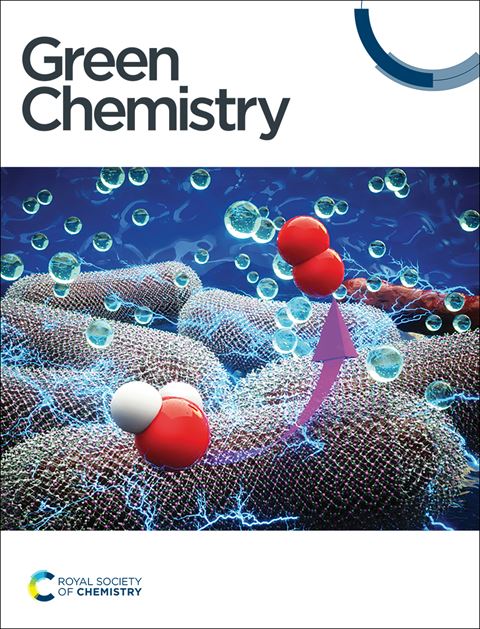Synthesis of robust yet flexible and transparent CPA hydrogels inspired by molting crab shells†
IF 9.3
1区 化学
Q1 CHEMISTRY, MULTIDISCIPLINARY
引用次数: 0
Abstract
Hydrogels are promising flexible substrates, yet their applications are always limited by their inferior mechanical robustness and lack of multifunctionality. Herein, inspired by flexible and robust molting crab shells, multifunctional ChMNF–PAA–ACC (CPA) hydrogels were developed by constructing a three-dimensional chitin micro-nanofiber (ChMNF) network with a layered structure, incorporated into an amorphous inorganic-based hybrid matrix of nano-segregated minerals (amorphous calcium carbonate, ACC) and protein-like acrylic acid (PAA) polymers. This preparation process enables a green and mild synthesis, employing sustainable ChMNF and ACC as biodegradable and biocompatible raw materials, with no need of complex treatments or costly functional agents. The resulting CPA hydrogels simultaneously feature high strength (∼28.6 MPa), optical clarity (high transmittance: ∼88.1%, low haze: ∼1.86%), good drying–swelling recycling properties, and intrinsic fluorescence and electrical conductivity, surpassing performances of most chitin fiber-reinforced gel materials. Owing to these merits, these CPA hydrogels can be assembled into multifunctional sensors to detect diverse external stimuli (such as strain, pressure, and temperature). Consequently, this dual bionic strategy provides an exciting idea for designing multifunctionally robust and transparent hydrogels, showing promising and sustainable potential in the application of flexible sensors.

求助全文
约1分钟内获得全文
求助全文
来源期刊

Green Chemistry
化学-化学综合
CiteScore
16.10
自引率
7.10%
发文量
677
审稿时长
1.4 months
期刊介绍:
Green Chemistry is a journal that provides a unique forum for the publication of innovative research on the development of alternative green and sustainable technologies. The scope of Green Chemistry is based on the definition proposed by Anastas and Warner (Green Chemistry: Theory and Practice, P T Anastas and J C Warner, Oxford University Press, Oxford, 1998), which defines green chemistry as the utilisation of a set of principles that reduces or eliminates the use or generation of hazardous substances in the design, manufacture and application of chemical products. Green Chemistry aims to reduce the environmental impact of the chemical enterprise by developing a technology base that is inherently non-toxic to living things and the environment. The journal welcomes submissions on all aspects of research relating to this endeavor and publishes original and significant cutting-edge research that is likely to be of wide general appeal. For a work to be published, it must present a significant advance in green chemistry, including a comparison with existing methods and a demonstration of advantages over those methods.
 求助内容:
求助内容: 应助结果提醒方式:
应助结果提醒方式:


